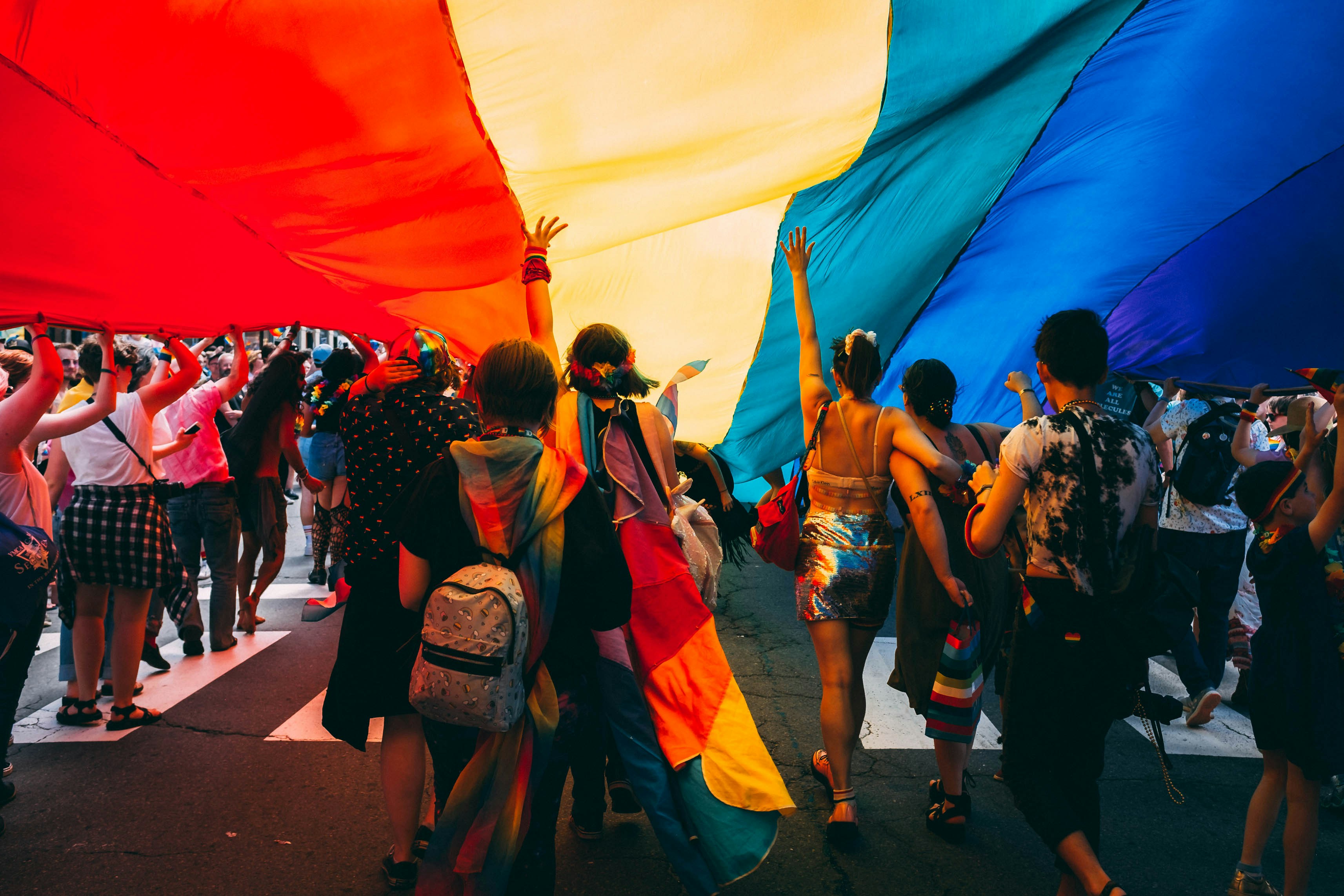(DISCLAIMER: this article was not written by a trans+ individual; first hand accounts of travel as a trans+ person can be found in the references)
Introduction
Travelling as an individual or group who identifies as LGBTQ+ is widely acknowledged to foresee increased risks to personal safety. The issues faced by the LGBTQ+ community are, however, reportedly felt ever more intensely by the trans+ community, and in this by trans women especially. Stonewall, the ACLU and Stop Hate UK, amongst many other LGBTQ+ activism bodies, widely acknowledge how the transgender community is the most targeted group in LGBTQ+ community as a whole. They are more likely to experience violent physical, verbal and sexual harassment, and in this are more likely to suffer from mental health issues.
Yet over recent years, more and more countries have adopted extreme policies and punishments regarding those who identify as trans+, thus limiting the destinations which trans+ individuals have safe access to. 2023, for example, was tragically a record setter for the most anti-trans bills passed in the US, with 2024 quickly catching up, according to Trans Legislation Tracker. Similar issues have occurred in the UK more recently, as well as throughout Europe as a lack of anti-discrimination and anti-harassment legislation prevails. Simultaneously, across the Global South, narratives around the ‘culture war’ and ‘gender ideology’ have seen many right-wing movements adopting anti-trans stances.
More so, the experiences which trans+ individuals face whilst travelling and whilst abroad remain critical to their safety, which can put them in a precarious situation. such as Naomi Hearts, Abeni Jones and Alex Jenny have come forward to speak on the many challenges, as well as the opportunities, which travel abroad affords trans+ individuals, and have come out as advocates of safe travel and exploration and a way to connect with oneself.
The threats in which trans women face today, conversely to the many developments in LGBTQ+ rights over the past decades, , as displayed by the noted growing levels of transphobic violence highlighted by the Trans Murder Monitoring Report (TMM) report, as well as individual examples which will be explored later. Ensuring that trans women, as well as their employers and peers, are aware of the many challenges they face within travel and thus around the world is paramount to shaping a more aware society. This article will thus develop to speak on the current threats faced by trans women around the world, as shaped by a transphobia which bypasses the expected borders, towards making recommendations on best practice for safe travel. It will then speak on the issues which trans women face whilst travelling, in the shape of airport pat-downs and body-scanners, passports and deadnames, and micro-aggressive transphobic behaviour. Finally, it will highlight the opportunities and positive aspects of travel, as described by trans women in the public eye.
Rising Transphobia
One needs to take only a ; as LGBTQ+ rights have come to develop over the past decade, trans+ individuals have slowly become the
The UK has seen many Conservative Party politicians, primarily Home Secretary Suella Braverman, speak widely on the harms which ‘gender ideology’ and trans+ individuals may impart on children and the traditional nuclear family structure. PM Rishi Sunak simultaneously was recently caught in a political controversy after making insensitive transphobic comments in the House of Commons, in front of murdered trans teenager Brianna Ghey’s grieving mother. Whilst other members of the party see this vilification and mocking of trans+ individuals as insensitive and widely transphobic, the loud minority within the party has led the way in creating novel, highly limiting and transphobic legislation within schools. Passed in December, the Conservatives’ novel guidance for schools around ‘gender questioning children’ remains staunchly harmful to trans youth and has been highly criticized by LGBTQ+ activists and allies. This is reflected in the violence faced by trans+ peoples in the UK. Anti-trans hate crimes, as measured by the Home Office, have skyrocketed, increasing by 156% over the course of four years (2018-2022). 1700 reported cases in 2018 have grown to 4300 in 2022, demonstrating how the scapegoating of trans+ people and of ‘gender identity ideology’ has led to an increase in violence of great proportions.
This rising transphobia most drastically manifests itself in the Trans Murder Monitoring statistics which are published yearly, documenting the vast amount of trans+ individuals murdered every year. The 2023 report noted a slight downturn in trans+ murders, yet a regional trend can be spotted, with a critical outlier:
| Trans Murder Monitoring Absolute Numbers Jan. 2023-Sept. 2023 |
| Brazil: 75 |
| Mexico: 33 |
| United States of America: 23 |
| Colombia: 18 |
| Ecuador: 17 |
In 2023, a total of 320 trans+ people were reportedly murdered, down from the 2021 peak of 375. Out of this number, 94% were trans women, 80% were trans+ people of colour, and 77% were between the ages of 18 and 40. Reported further note the violent nature of these crimes, with over 50% of the reported murders occurring in highly violent manners.
South America appears one of the most hostile areas of the world for trans+ individuals both in 2023 and in general over time. In 2023, 73% of the reported murders happened in South American, with Brazil being the epicentre of the issue, where 31% of the reported murders occurred. Similarly, since 2008, where TMM began collecting data, this trend appears clear with six out of the ten top countries with the most trans+ murders coming from the South American continent:
| Trans Murder Monitoring Absolute Numbers 2008-Sept. 2023 |
| Brazil: 1841 |
| Mexico: 701 |
| United States of America: 406 |
| Colombia: 254 |
| Venezuela: 134 |
| India: 125 |
| Argentina: 121 |
| Pakistan: 106 |
| Philippines: 88 |
| Ecuador: 76 |
It must be further noted that the murders reported by TMM are of a limited nature. TMM is only able to track those incidents reported in the media, meaning figures are likely far higher than those noted above, as many murders and attacks go unreported or misreported by the media. Statistics from the 2021 UK National LGBT Survey report that 88% of trans+ people do not report hate crimes they experience to the police or other bodies, indicating these statistics are only indicative of further endemic transphobic violence.
Moreover, a crucial degree of intersectionality is noted by these statistics. TGEU notes how, in line with the above-mentioned statistic of 80%, trans women of colour remain far more likely to face violence and harassment. Considering the intersection of race and gender identity in how it exacerbates risk for trans women of colour thus remains paramount when considering individuals’ safety.
The outlier to the group above appears clear. The United States, often perceived as a beacon of acceptance, is reported to be responsible for the third highest levels of trans+ murders throughout the past decades. Transphobia appears on the rise in the American context beyond tendencies for physical violence. The Movement Advancement Project (MAP), critically noted how a considerable amount of US states (21) has come to adopt highly detrimental policies around gender identity and trans+ peoples, with Florida’s ‘Don’t Say Gay’ having gained most media attention.
This issue has also come to plague Europe, primarily the UK and Italy, as transphobia appears evermore prominent in politicised public discourses around ‘harmful gender ideologies’. Threats to trans+ individuals remain a global issue, not reserved to the Global South. Beyond this, in 2024, shockingly few nations in Europe currently have thorough policies in place aiming to tackle the hatred of trans+ peoples. Denmark and Luxembourg stand out as the most progressive nations in this regard, yet most European countries have limited hate speech and hate crime legislation in place to protect trans+ individuals.
Conclusively, it has become evident that a trend towards regression around LGBTQ+ rights, and trans+ rights most prominently, is taking up traction. Transgender Europe notes increasing polarization and politicization of trans issues, shaped by anti-trans rhetoric and the rise of the right in Europe and the US, has led to an increasing disregard for the human rights of trans+ people, especially those of trans women. Widely the world as a whole appears increasingly hostile towards this minority group, resulting in the need for increased security measures whilst travelling.
Top Tips
Tip #1: Research your destination and know your rights
This first tip is simple. Being aware of the political situation in your destination, of the legislation in place for the protection or persecution of trans+ individuals, and of the gender norms present in that nation, will aid in determining the level of risk you may be put in, and thus in mitigating it through whatever means. Avoiding highly restrictive nations, such as Afghanistan, Brunei or Nigeria, and maintaining appropriate levels of alert in nations with a recent history of transphobia and transphobic crime, may aid in securing an initial level of security.
Be aware of embassies, as possible points of recourse in case of assault or discrimination.
Finally, remaining considerate of a given country’s cultural and social norms, particularly around gender and sexuality, remains a key way to blend in and avoid unwarranted attention.
Tip #2: Travel in groups and/or let others know where you are
Travelling alone, whilst being a highly rewarding experience, can be more dangerous generally in comparison to travelling in a group with friends, family or a partner. If possible, travelling in groups with friends provides ‘safety in numbers’, and may reduce your risk of being a target of transphobic and misogynistic discrimination, harassment or violence. Moreover, having a plan in place in the case that such an event dose happen would be greatly beneficial towards mitigating risk. Similarly, regardless of whether you are travelling alone or in a group, it is recommended to let someone else know where you are and what you are doing. Sharing your location with a friend, family member or partner at home again allows for quicker response in the case of an incident. Whilst a somewhat drastic measure, ensuring this contact knows what you are wearing and other such details, may be a good idea in more high threat instances.
Tip #3: Consider travel insurance or hiring security services
Given the increased risks faced by trans women when travelling, getting travel insurance is recommended as a most paramount to mitigating possible issues which may arise. This may help cover medical bills in case of violent attacks, or any other emergencies which may occur. This is especially recommended if you are visiting a country which is notoriously non-LGBTQ+ friendly. Similarly, if you are travelling for professional reasons, consider having security coverage when abroad, provided by your workplace.
Travel Hardships
Beyond the macro-level issues noted above, trans women face a variety of other challenges in their travel journeys which have historically seen trans women and trans+ individuals widely choosing to not travel for leisure. Many of the aggressions which plague trans+ individuals travel, unfortunately, remain hard to mitigate, as they remain institutionally ingrained and would require legislative and cultural resolution. Still, ways to minimize the effect of these such aggressions appear.
Top Tips
Tip #4: Body-scanners and pat-downs
Airport security agents make snap decisions regarding people’s genders every day, and so do airport body-scanners, which are designed to mark trans bodies as ‘anomalies’. These shortcomings in technology, paired with a lack of sensitivity training create great sources of tension for trans+ travellers. This discomfort is exacerbated regarding trans women, who additionally face transmisogyny in these situations and more so trans women of colour, by airport technologies. This may lead to many an uncomfortable public discussion with airport agents, as well as deadnaming and general micro-aggressive transphobia. Moreover, some trans+ attire, such as prosthetics and hair accessories like wigs, are likely to cause airport staff to undergo additional screenings.
Still, it remains that in most cases full-body scanners are optional, and you may opt for a pat-down in its place. Most often, you may ask to be pat down by someone of your own gender and can further request to have this happen in a private space. Whilst airport agents should remain professional in this, many trans women have If this does transpire, and in the case you feel comfortable speaking on the matter, contacting your national embassy may be a starting point for recourse.
Tip #5: Carry-ons and travel documents
Carry-on luggage may come to be an issue due to your personal items. Medication and necessary supplies as well as prosthetics are widely allowed through security. However, given the chance of having baggage checked at this point in your travels, some trans+ individuals may feel safer putting these items in their checked baggage. It is recommended that you carry your prescriptions with you, with necessary receipts or doctors’ letters, in case you are questioned. Finally, depending on the country, you may be allowed to ask for a private baggage check. This is not a guaranteed right, and you may benefit from researching specific airport guidelines on this matter.
Travel documents, in turn, appear a main source of discomfort for trans+ travellers, given airport personnel’s lack of training at times, as well as the strenuous and often problematic process of having one’s documents altered post-transition. In this, is recommended that you bring copies of court name change certificates and backup copies of relevant legal and other documents, in case you need to present them. Still, the need to ensure that the name and gender on your reservation matches that on your ID, often creates opportunities for deadnaming and micro-aggressive transphobia. This issue is of institutional nature, and little can be done to mitigate the psychological damage which many report come from it.
Tip #6: Hotels and rental properties
Being discriminated against occurs all throughout travelling, including when staying the night at a hotel or a rental property. This may be simply inconvenient and discriminatory, as you may get turned away, or it may escalate to feeling in physical danger in the face of a pushy rental host or a violent hotel manager. This is highly dependent on whether the nation you are travelling to has anti-discrimination laws in place regarding trans+ individuals and whether these are properly enforced. You may consider this when booking your stay; look for properties and hotels which are noted to be LGBTQ+ friendly and look to recommendations and reviews which speak on this for validation. In any case where you feel unsafe, it is recommended you remove yourself from that situation as soon as you feel uncomfortable, and seek somewhere else to stay.
The Bright Side of Travelling as a Trans Woman
Simultaneously, trans women journalists and travel influencers like Naomi Hearts, Abeni Jones and Alex Jenny have come forward to speak on the transformative and highly beneficial experiences which come from travelling as a trans woman.
Many speak on the importance of breaking the cycle of fear, taking a step forward towards encouraging acceptance worldwide, all whilst ensuring your own security. Exploring self-love through travel, they note, is a paramount method of relaxation which should be available to everyone, regardless of sex or gender identity. They remain proponents of travelling, regardless of the any challenges which it poses, due to the many benefits it affords.
Trans author and journalist Abeni Jones speaks on the interesting idea of ‘trans invisibility’, which she notes as one of her primary joys of travelling. The freedom which comes from anonymity upon landing in a new country, she notes, is invaluable to a community which is so plagued by often undue pressure from the past: Omission of unnecessary truths is a soothing reprieve from reality. The liberty which comes from this, she argues, offsets the large amounts of planning which precede travel given current threats around the world.
| Top 5 Best LGBT Travel Destinations 2024/2025, by Out of Office | Top 5 Most Queer Friedly Destinations 2024, by Spartacus Gay Travel Index | |
| Barcelona, Spain | Canada | |
| Thailand | Malta | |
| Greece | New Zealand | |
| Costa Rica | Portugal | |
| Bora Bora | Spain | |
Travelling as a trans woman can, as per first-hand accounts, lead the way to great experiences of self-love, expression and growth. Ensuring all the proper steps are taken to ensure safety remain paramount given the current global hostilities facing trans+ individuals, and the luxury and benefits which come from travel should never be denied an individual. Traveling to recommended, safe and queer-friendly locations may be an apt starting point in this.
—
Glossary (Stonewall UK Definitions)
Deadnaming: Calling someone by their birth name after they have changed their name. This term is often associated with trans people who have changed their name as part of their transition
Passing: If someone is regarded to be a cisgender man or cisgender woman.
Trans: An umbrella term to describe people whose gender is not the same as, or does not sit comfortably with, the sex they were assigned at birth
Transgender/Trans woman: A term used to describe someone who is assigned male at birth but identifies and lives as a woman. This may be shortened to trans woman, or MTF, an abbreviation for male-to-female
Transmisogyny: dislike of or strong prejudice against transgender women.
Transphobia: The fear or dislike of someone based on the fact they are trans, including denying their gender identity or refusing to accept it. Transphobia may be targeted at people who are, or who are perceived to be, trans.
Article produced by NGS Intern – Matilde Parracho






